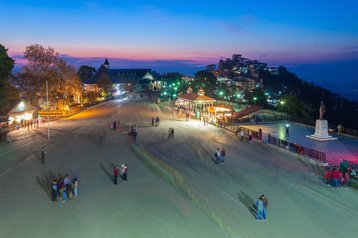India’s ‘first green data center’ has been opened to provide the infrastructure necessary for the full digitization of government records in the state of Himachal Pradesh.
The State Data Center in Shimla, the capital of Himachal Pradesh state, will mean money spent on storage capacity at a number of smaller facilities can now be concentrated on hosting in one centralised location. Construction of the center cost Rs58 crore ($8.7m). It currently operates with 1 terabyte of storage capacity from six servers, though it has space to house more than 1,000 servers.
Rural connections
The facility will save individual government departments in Himachal Pradesh from creating their own infrastructure, said the state’s chief minister, Virbhadra Singh, who inaugurated the center on Saturday, June 4.
This improved operational efficiency achieved through consolidation will in turn reduce energy consumption.
Connectivity on the Himachal Pradesh State Wide Area Network will be provided to field offices for accessing departmental applications.
The state also plans to enact 101 e-governance services by the end of 2016 as part of the Lokmitra Kendra, or Common Service Centre scheme.
Through the project the government aims to establish 3366 e-governance centers to act as front-end delivery points for local services to residents in rural communities.
Fifty-eight of these services have already been made active.
“So far, land records of 115 tehsils and sub-tehsils have been migrated to the centre. Himachal will soon be the first state to have online land records,” Virbhadra said.
The inauguration ceremony also heralded the opening of the new Information and Technology Department building at Mehli. The new capacity provided by the State Data Center will allow for all government departments in Himachal Pradesh to use the IT facility.
The state has won 10 national e-governance awards for implementation of software and applications, Information and Technology minister Vidya Stokes said.
The department also launched a mobile app that helps residents and tourists find available vehicle parking slots. The owner of the land on which the slot is located uses the app to notify potential customers, who then pay a fee for the space based on the duration of their stay.

